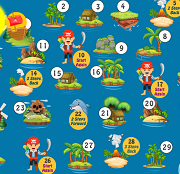Types of Forests, Science Game for Kids
This Forest Ecosystems Science Game will allow you to learn about different forest ecosystems, as well as the animals and plants that depend upon them. There are three types of forest: coniferous, boreal, and tropical. Some forests are made up of trees that produce needles and cones, rather than leaves. Some trees lose their leaves in the changing seasons, while others house multiple species of animals. The game will test your child's ability to identify which animal is which. This game will teach the child about the different layers of the tropical forest and the various organisms that live within them.
Rainforests are vital to the survival of life on Earth. The Amazon Rainforest, which covers most of South America, is the largest tropical forest. This dense jungle supplies about 20% of Earth’s oxygen requirements.
Boreal forests are known for their extreme cold climate. Coniferous forest is another name for boreal forest. It is dominated by conical trees. Boreal forests house animals that can withstand cold temperatures all year, including bears, wolves, caribou and bears. They are located in large areas of Canada and Alaska, and serve as a major carbon sink for our environment. They absorb carbon dioxide from the air and help to keep the planet healthy. Conifers are the most common tree in boreal forests, but there are also some deciduous trees. Black and white fir and balsam Fir are some of the most prominent species. Deciduous forests are not evergreen, so they lose their leaves in different seasons.
Our fun science game helps children learn the differences between coniferous (boreal), rainforest, and deciduous forest. You will be able to teach your children the differences between each forest type.
Forests are large ecosystems that absorb carbon dioxide and store harmful gases. WWF estimates that more than 80% species live within or near forests. Many species of animals and plants live in trees, as well as insects and human beings. Forests and people living near them contribute to Earth's oxygen cycle as well as the carbon cycle.









